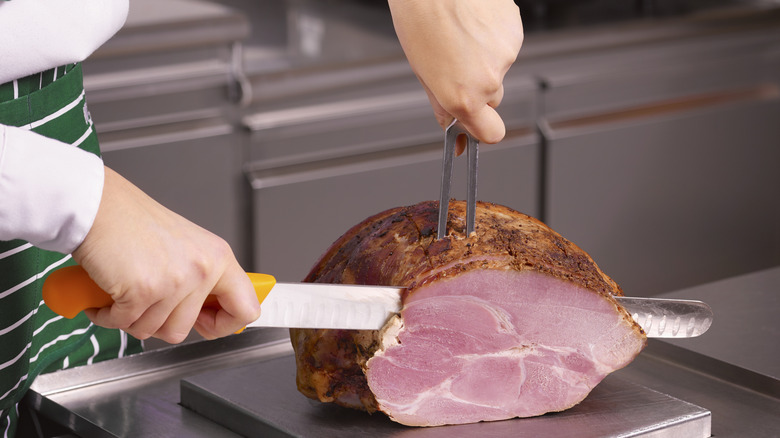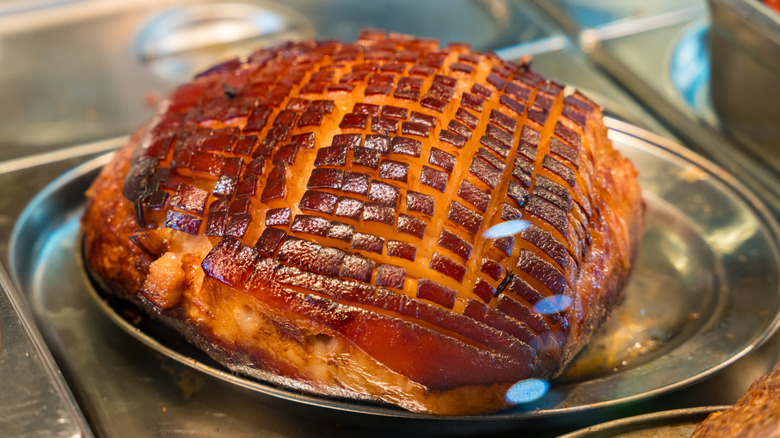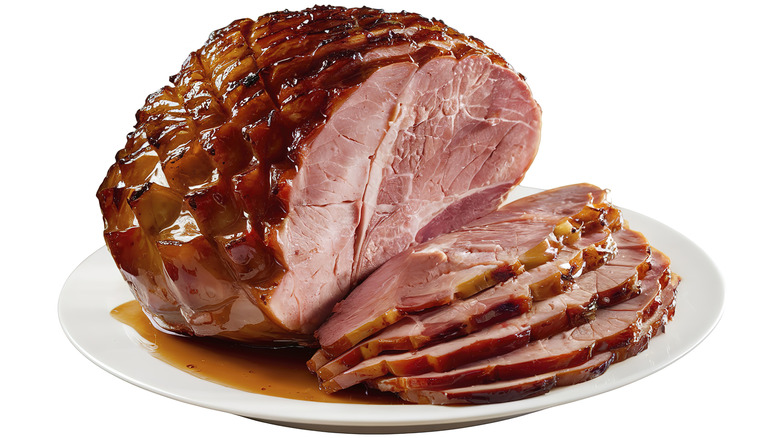The One Step You Seriously Shouldn't Skip When Cooking Ham
If you've never cooked a ham before, then more than likely, anxiety is high, and the sheer weight to execute just might be debilitating. Nobody wants to serve up mediocre, dried-out ham to the family. That won't bode well for your reputation or for the family's collective taste buds, for that matter. Thankfully, there's a surefire plan for your ham to turn heads at your next group meal. You'll be good if you embrace this one step that often goes overlooked by home cooks: scoring.
It might sound like something only top chefs bother with, but skipping will kneecap your chances of success before they can even get off the ground. Scoring your ham, or lightly slicing the surface in a crisscross pattern, isn't just about making it look nice (though, if we're totally honest, it does make it look really fancy). Scoring increases the surface area of the fat layer and is the key to getting all that sweet, sticky glaze to soak into the meat and turn into the glossy, flavorful crust — which, more times than not, motivates you to go back for seconds. Skip it, and your ham risks being bland, rubbery, and dry.
Scoring helps your glaze actually stick
One of the best parts of the ham is that delectable glaze. But if you make the mistake of not scoring the ham, you're just brushing the glaze on top of a fat barrier. Scoring creates little grooves and valleys where the glaze can settle and get comfy. That means more golden flavor where it counts: on the outside of the ham.
Scoring becomes all the more important when using a sweeter glaze, like brown sugar and mustard, maple syrup, or honey and cloves. These particular blends need even more time under the heat in order to develop flavor and texture properly, and scoring aids in that process. If you decide to leave scoring out of the process, you're guaranteed to have all of your hard work pooling to the bottom of your roasting pan. It's a small step that goes a long way in getting the most flavor out of your ham.
It also helps the fat render and gives it a crust
In addition to making the ham taste better, scoring has a big impact on the texture. The slits allow the fat under the skin to render more efficiently as the ham roasts. Instead of staying thick and rubbery, the fat melts and crisps up, leaving you with a better bite overall. And when it comes to the leftover ham, it reheats so much better when it's been scored.
These slices also help the outside of the ham get that slightly crispy, browned edge that contrasts so nicely with the juicy meat inside. When fat renders correctly, it enhances the flavor of the whole dish; it bastes the ham as it cooks, keeping it moist and tender. Skipping the scoring step can leave you with a ham that's still tasty but missing that signature texture and deep flavor that makes roasted ham feel like something special.
Be confident and know that you don't need to order a holiday ham to get by; just grab a sharp knife, and take a couple of minutes to make those classic diamond-shaped cuts. It's easy, it looks great, and most importantly, it sets you up for ham that tastes just as good as it looks — maybe even better.


